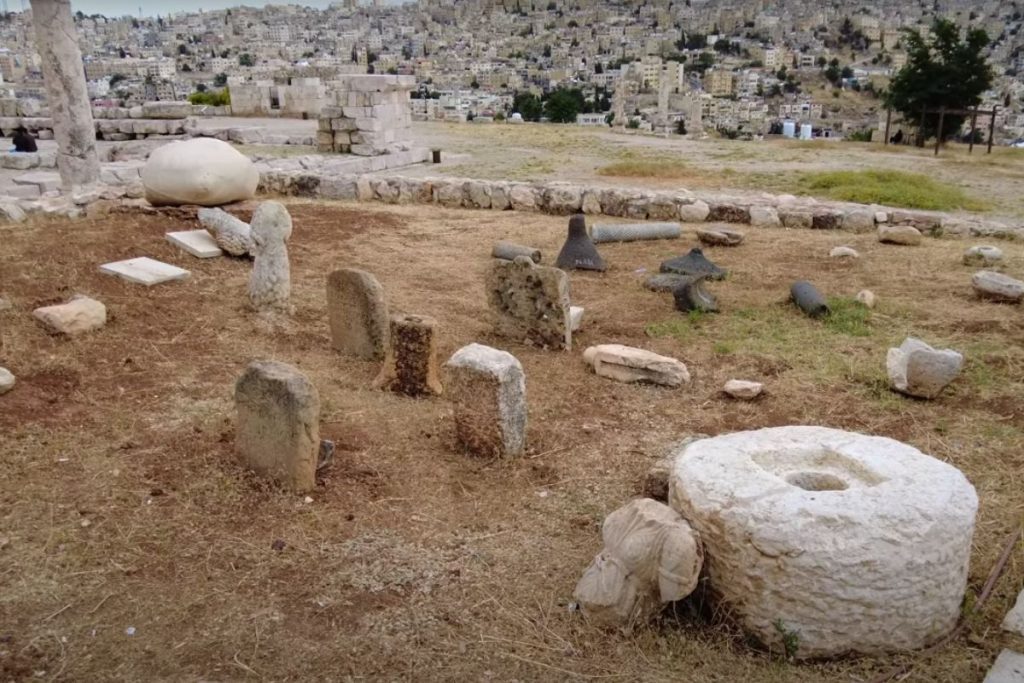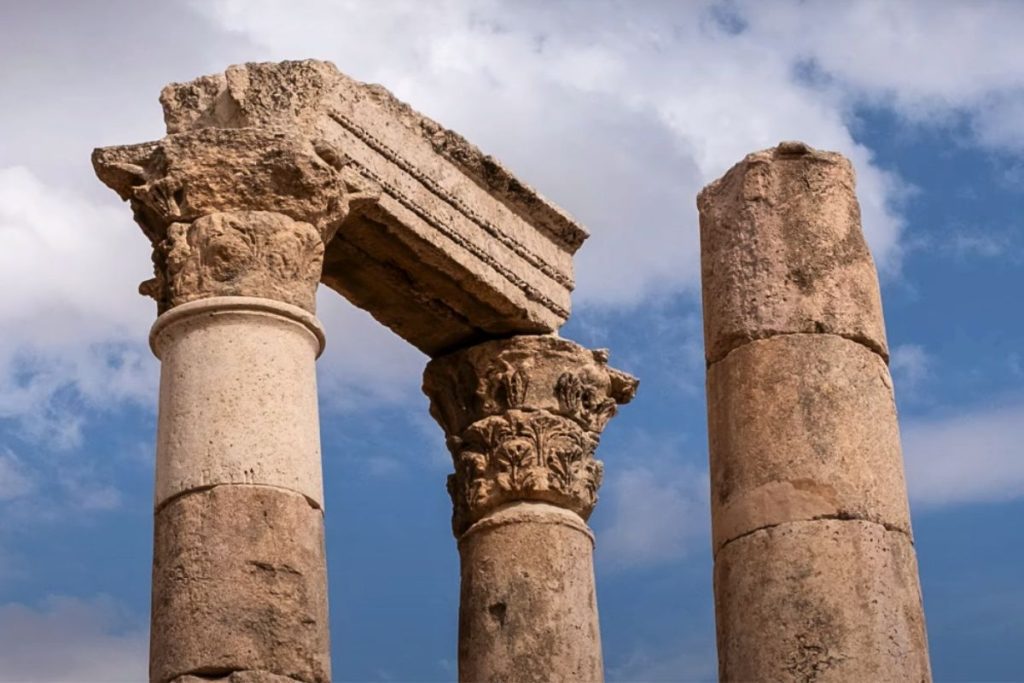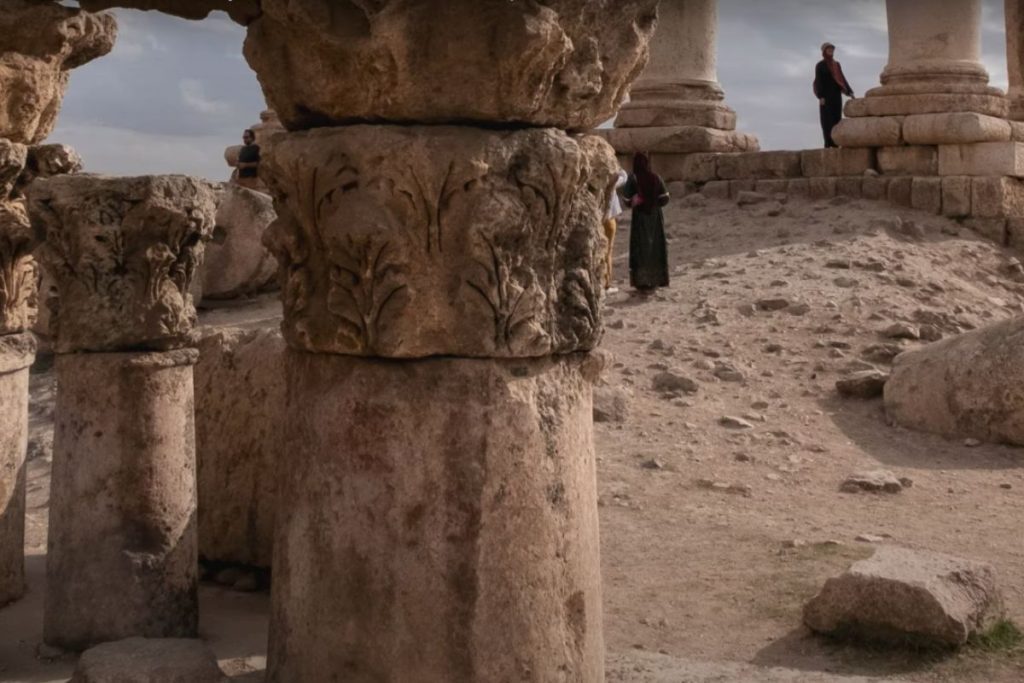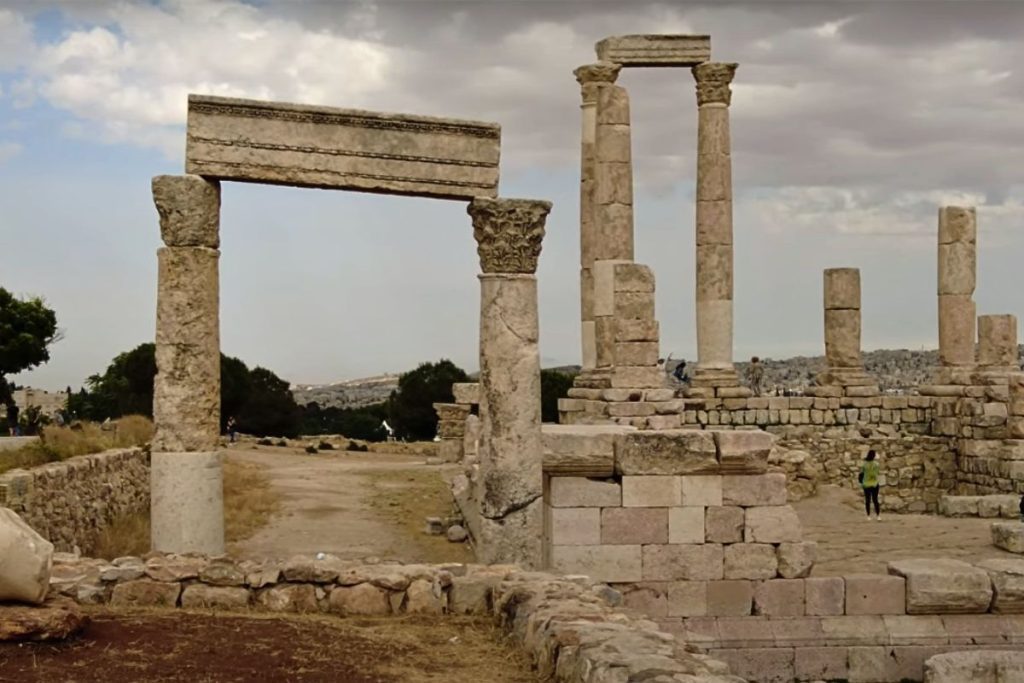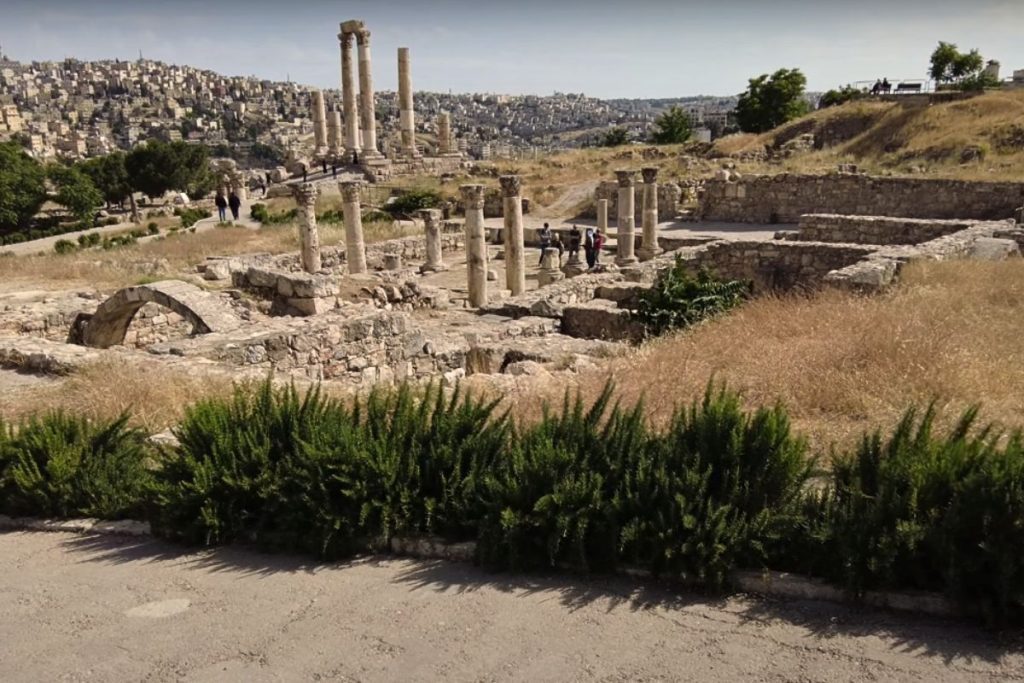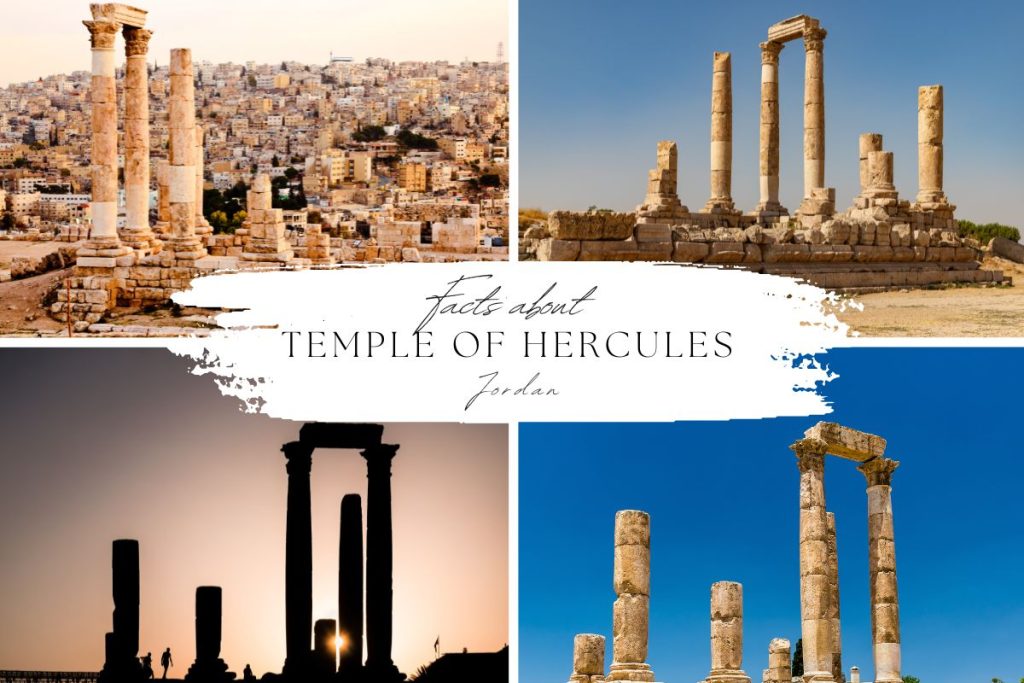
There is a well-known archaeological site in Jordan called the Citadel of Amman, also known as Jabal al-Qal’a, where you can find the remains of the Temple of Hercules. The Citadel is located in the heart of Amman, the capital city of Jordan. The Temple of Hercules is a significant structure within the Citadel and is one of the site’s prominent historical features.
The Citadel of Amman offers panoramic views of the surrounding city and is an important archaeological site that includes various historical structures from different periods, including Roman, Byzantine, and Umayyad remains.
For more extraordinary sights to see in Amman, check out our Amman guide. But now, make sure you know these facts about the Roman Temple of Hercules:
When Was the Roman Temple of Hercules in Amman Built?
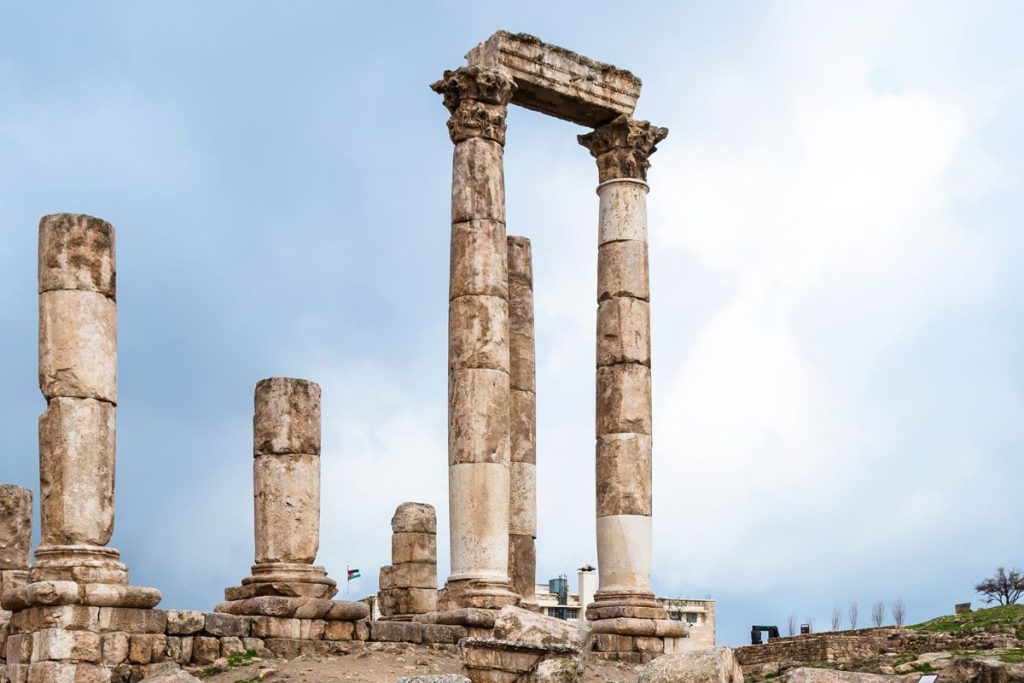
The Temple of Hercules in the Citadel of Amman, Jordan, is believed to have been built during the Roman period, around the 2nd century AD. While the exact construction date may not be precisely determined, this timeframe places its construction within the broader historical context of Roman rule in the region.
The Roman Empire had a significant influence on the architecture and cultural landscape of various regions, including Jordan. The Temple of Hercules is one of the notable remnants of this historical period, and its construction likely occurred during a time when the Romans established their presence and influence in the area.
Who built the Roman Temple of Hercules in Amman?
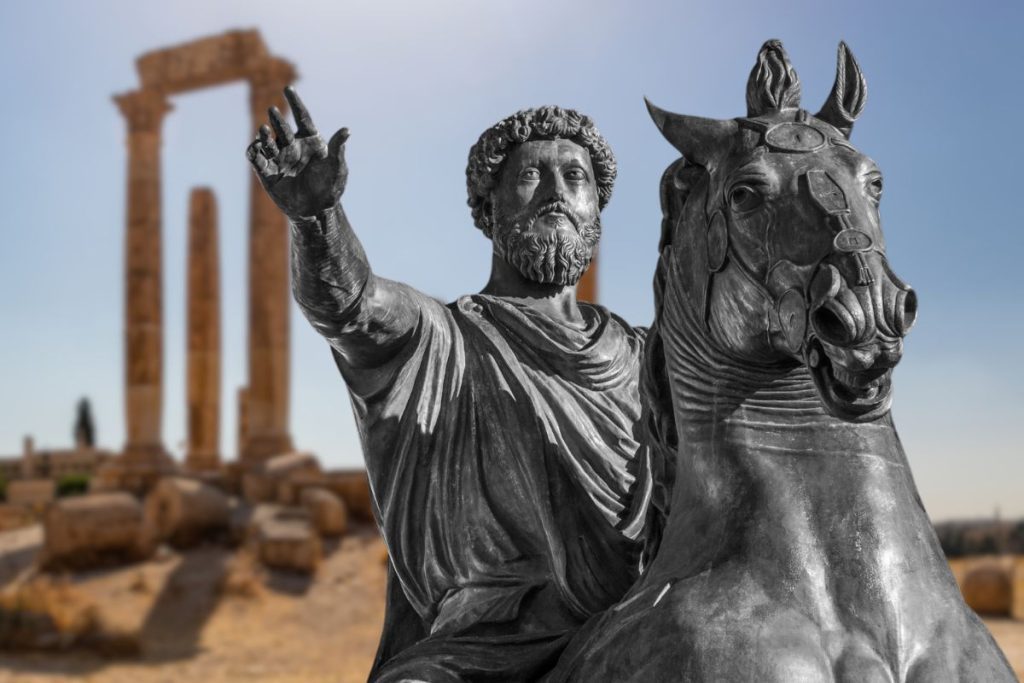
The specific individuals or builders responsible for the construction of the Temple of Hercules in Amman, Jordan, are not definitively known as historical records from that period are often incomplete or lost. The temple was built during the Roman period, around 161-180 AD, during the reign of the emperor Marcus Aurelius.
During this time, the construction of public buildings and temples in the Roman Empire was typically initiated by public officials, wealthy individuals, or, in some cases, military commanders seeking to gain favor with the gods. The actual builders and craftsmen who constructed the temple would have been skilled architects, engineers, and artisans of the time.
The influence of Roman architectural styles on the temple’s design suggests that Roman architects and builders were likely involved. Unfortunately, due to the lack of detailed historical records, the specific names of those involved in the construction remain unknown.
Mystery of the Giant Hand of Hercules at the Temple
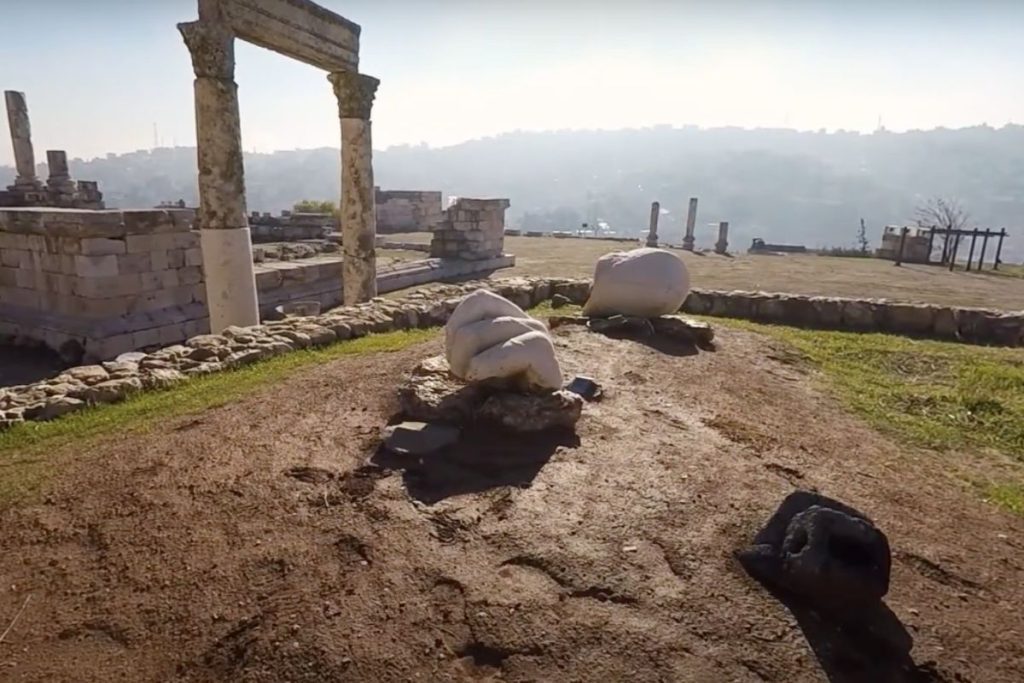
The Hand of Hercules was unearthed by archaeologists in Amman, the capital of Jordan, at the site of the Roman Temple of Hercules.
The hand is a massive fragment, representing three fingers, believed to have been part of a colossal marble statue of the mythical demi-god Hercules. Additionally, an elbow from the same statue has also been discovered.
Date of Origin: The hand and its associated statue are estimated to date back to the Roman period, specifically to the 2nd century CE, during Marcus Aurelius’ Roman occupation of Amman’s Citadel.
Size of the Original Statue: Scholars speculate that the original statue of Hercules, of which the hand and elbow are parts, could have measured upwards of 40 feet high, making it one of the largest known marble statues of its time.
Location: The hand and elbow can be seen today by visitors at the remains of Amman’s Temple of Hercules. The site provides a glimpse into the monumental architecture and artistic representations of the Roman period in the region.
Abandonment and Destruction: The Temple of Hercules, like many ancient structures, appears to have been abandoned or left incomplete for reasons that remain unclear. The theory suggests that the statue of Hercules, including the hand and elbow, might have been toppled during an earthquake, with only these fragments surviving.
Symbolism: The choice to dedicate a temple and create a colossal statue of Hercules reflects the significance of Hercules in Roman mythology. Hercules, known for his strength and heroic deeds, was a popular and revered figure in ancient Roman culture.
Archaeological Significance: The discovery of the Hand of Hercules contributes to our understanding of the religious practices, artistic expressions, and monumental architecture of the Roman period in the region.
Facts about the pillars of the Temple of Hercules in Amman
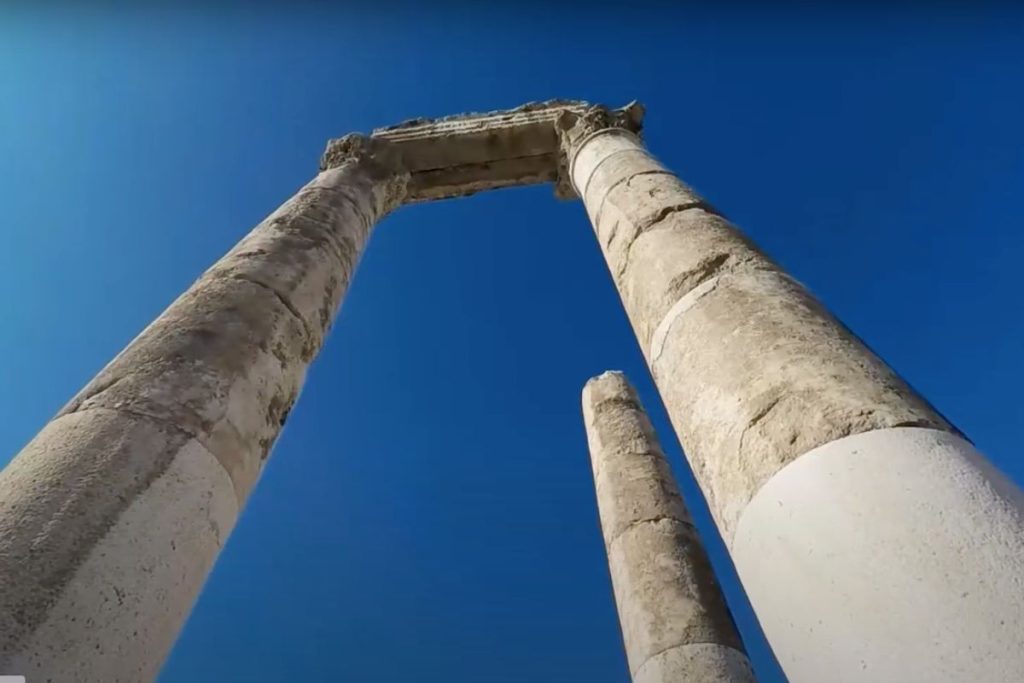
The significant height of the columns in the Temple of Hercules in Amman, measuring 13.5 meters (45 feet) according to the information provided, can be attributed to several architectural and symbolic reasons commonly seen in ancient Roman temple design:
- Architectural Grandeur: Tall columns were often used in Roman temples to create a sense of grandeur and monumentality. The sheer height of the columns contributes to the visual impact of the structure and emphasizes its importance.
- Symbolism of Power and Authority: Tall columns were considered a symbol of power, authority, and divine presence. They conveyed a sense of strength and stability, aligning with the perceived characteristics of the deity to whom the temple was dedicated, in this case, Hercules.
- Aesthetic Proportions: Ancient architects often adhered to specific aesthetic proportions in their designs. The height of the columns would have been carefully calculated to harmonize with other architectural elements, creating a visually pleasing and balanced composition.
- Structural Considerations: The height of the columns was also influenced by structural considerations. Taller columns provided additional vertical support for the temple’s roof and other structural elements, contributing to the overall stability of the building.
- Dramatic Entry: The height of the columns at the entrance of the temple would have created a dramatic entryway, emphasizing the transition from the external world to the sacred space within.
- Emphasis on the Front Facade: The information suggests that the columns were placed predominantly at the front of the temple, enhancing the visual impact of the temple’s facade. This design choice may have been made to prioritize the entrance as a focal point.
Orijinal Structure of the Temple of Hercules in Amman
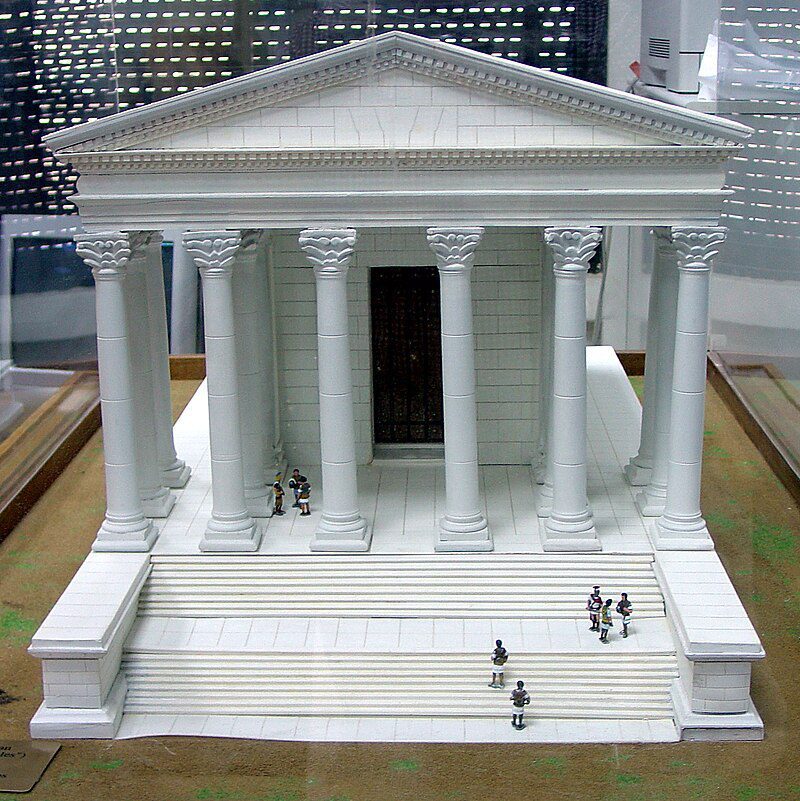
Photo By Michael Gunther – Own work, CC BY-SA 4.0, https://commons.wikimedia.org/w/index.php?curid=34070414
The original structure of the Temple of Hercules in Amman, Jordan, was a classical Roman temple with distinctive architectural features typical of Roman temple design. While the complete original structure no longer exists, archaeological evidence, including surviving remnants and historical records, provides insights into its likely appearance:
Circular Temple Design: The Temple of Hercules was originally circular in design, featuring a circular or cylindrical cella (inner chamber or sanctuary) surrounded by a colonnade of columns. The circular design distinguished it from the more common rectangular Roman temples.
Columns and Portico: The temple had a portico with columns, creating a grand entrance. The surviving remnants include two giant vertically standing columns, which likely formed part of this impressive colonnade. The columns were adorned with Corinthian capitals, characterized by intricately carved acanthus leaves.
Podium and Platform: The temple stood on a raised podium or platform, providing elevation and emphasizing its importance. The remains of the podium are still visible today.
Colossal Statue of Hercules: At the heart of the temple, there was a colossal statue of Hercules, which played a central role in naming the temple. The statue was estimated to be over 13 meters tall, making it one of the largest statues from the Greco-Roman period.
Decorative Elements: Like many Roman temples, the Temple of Hercules would have featured various decorative elements, including friezes, reliefs, and sculptures depicting scenes from mythology or honoring the deity to whom the temple was dedicated.
The original structure would have been an impressive architectural and artistic achievement, reflecting the grandeur and cultural influence of the Roman Empire during that period. Over time, the temple experienced various natural and human-induced factors, leading to its partial destruction and alteration of its original appearance. Today, the surviving columns and remnants provide a glimpse into the former glory of the Temple of Hercules in Amman.
Temple of Hercules Jordan Amman
FAQs
The Roman Temple of Hercules is located in the Amman Citadel, also known as Jebel al-Qal’a, in the heart of modern-day Amman, Jordan.
The temple includes impressive columns, with restored columns and bases measuring 13.5 meters (45 feet) tall. The site also features a podium and fragments of a colossal marble hand and elbow believed to be from a statue of Hercules.
The temple is an archaeological site, and while visitors cannot enter the temple itself, they can explore the surrounding area, view the restored columns, and see the fragments of the Hercules statue.
Yes, guided tours are often available at the Amman Citadel, providing visitors with insights into the historical and cultural significance of the site.
The opening times vary depending on the season. During winter (October to March), the Citadel is open from 8:00 am to 4:00 pm. In the summer months, it extends its hours, allowing visitors until 7:00 pm.
Yes, an entrance fee of JOD 3 (approximately $4) is applicable for those who haven’t purchased the Jordan Pass. The Jordan Pass provides access to multiple historical sites in Jordan and includes a tourist visa.
Jordan is a conservative country, so it’s advisable to wear modest clothing covering shoulders and knees. Loose-fitting, long-sleeved tops and pants or skirts below the knee are recommended.
Restroom facilities are available at the site. It’s recommended to bring water, especially during warmer months. There might be limited on-site dining options, so consider bringing snacks.
Yes, photography is generally allowed, but it’s advisable to check for any specific restrictions, especially in areas with sensitive artifacts or ongoing restoration work.
Yes, apart from the Temple of Hercules, nearby attractions include the Roman Theater and the Jordan Archaeological Museum, providing a comprehensive historical experience.
Respect local customs and be mindful of other visitors. It’s advisable to avoid loud conversations in sensitive areas and seek permission before photographing individuals.
Make the most of your time exploring the Roman Temple of Hercules in Amman with these facts. Choose from a selection of Jordan tours and enjoy your adventure in Jordan!
 Spring Sale: 2 FOR 1
Spring Sale: 2 FOR 1 Croatia Sailing 2024: 2 For 1
Croatia Sailing 2024: 2 For 1 Greece Trips : 2 For 1
Greece Trips : 2 For 1 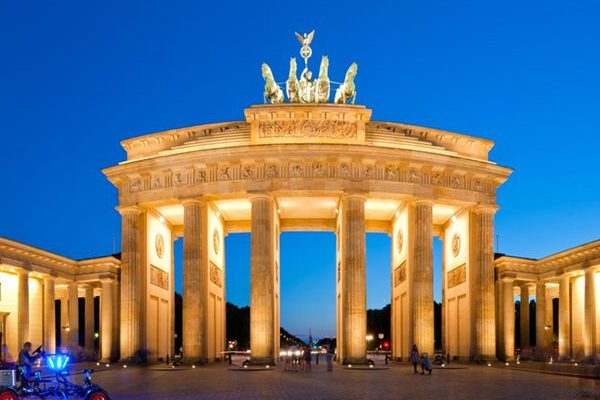 Central & Eastern Europe Tours: 2 For 1
Central & Eastern Europe Tours: 2 For 1  Why Travel Talk
Why Travel Talk Safe Travels with Travel Talk
Safe Travels with Travel Talk Fair Travels with Travel Talk
Fair Travels with Travel Talk Travel Talk Blog
Travel Talk Blog